 Tin; rectangle, contained by the diagonals of a quadrilateral inscribed in a circle, is equal to the sum of the rectangles contained by its opposite sides. Tin; rectangle, contained by the diagonals of a quadrilateral inscribed in a circle, is equal to the sum of the rectangles contained by its opposite sides.  Science Examination Papers - Page 248by Great Britain. Education Department. Department of Science and Art - 1899Full view Science Examination Papers - Page 248by Great Britain. Education Department. Department of Science and Art - 1899Full view - About this book
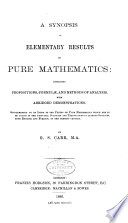 | George Shoobridge Carr - Mathematics - 1886 - 1036 pages
...base and the diameter of the circumscribing circle. VI. D. — Ptolemy's Theorem. The rectangle of the diagonals of a quadrilateral inscribed in a circle is equal to both the rectangles under the opposite sides. BOOK XI. XI. 4. — A right line perpendicular to two... | |
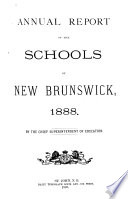 | New Brunswick. Board of Education - Education - 1889 - 1004 pages
...equal to the similar and similarly described figures upon the sides containing the right angle. 2. The rectangle contained by the diagonals of a quadrilateral inscribed in a circle is equal to the sum of the rectangles, contained by its opposite sides. 3. If two planes cut one another, their common section... | |
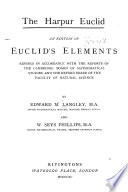 | Edward Mann Langley, W. Seys Phillips - 1890 - 538 pages
...satisfying the given conditions, show that their circum-circles are equal. PROPOSITION D. THEOREM. The rectangle contained by the diagonals of a quadrilateral inscribed in a circle is equal to the sum of the rectangles contained by its opposite sides. Let ABCD be a cyclic quadl., AC and BD its diagls. ; then... | |
 | George Minchin Minchin - Statics - 1890 - 430 pages
...regard to the circumstances of given systems of forces. Thus, Ptolemy's theorem that the rectangle under the diagonals of a quadrilateral inscribed in a circle is equal to the sum of the rectangles under the opposite pairs of sides follows (see example 1 3, p. 1 9) from the fact that,... | |
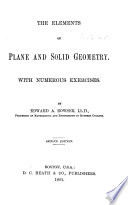 | Edward Albert Bowser - Geometry - 1890 - 420 pages
...circle circumscribed about a triangle when the three sides are known. EXERCISE. The product of the two diagonals of a quadrilateral inscribed in a circle is equal to the sum of the products of its opposite sides. SUGGESTION.— Make /DAE = /BAC. Then in the similar is DAE, CAB, AD... | |
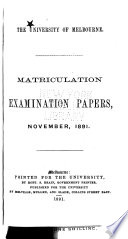 | 1891 - 718 pages
...two sides on two parallel straight lines are to one another as the sums of their parallel sides. 3. The rectangle contained by the diagonals of a quadrilateral...the two rectangles contained by its opposite sides. What does this proposition become when the diagonals are diameters? 4. Straight lines which are cut... | |
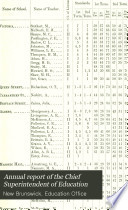 | 1891 - 718 pages
...equal to the similar and similarly described figures upon the sides containing the right angle. 2. The rectangle contained by the diagonals of a quadrilateral inscribed in a circle is equal to the sum of the rectangles, contained by its opposite sides. 3. If two planes cut one another, their common section... | |
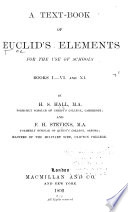 | Euclid - Geometry - 1892 - 460 pages
...:: EA : AC; vI. 4. .'. the rect. BA, AC'^the rect. EA, AD. vi. 16. QED PROPOSITION D. THEOREM. Tlie rectangle contained by the diagonals of a quadrilateral...the two rectangles contained by its opposite sides. Let ABCD be a quadrilateral inscribed in a circle, and let AC, BD be its diagonals: then the rect.... | |
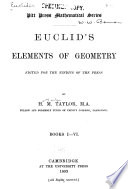 | Henry Martyn Taylor - 1893 - 486 pages
...Wherefore, if two triangles &o. PROPOSITION 37 B. The rectangle contained by the diagonals of a convex quadrilateral inscribed in a circle is equal to the sum of the rectangles contained by pairs of opposite sides*. Let ABCD be a quadrilateral inscribed in a circle... | |
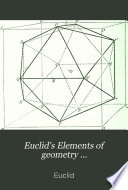 | Henry Martyn Taylor - Euclid's Elements - 1895 - 708 pages
...Wherefore, if two triangles &c. PROPOSITION 37 B. The rectangle contained by the diagonals of a convex quadrilateral inscribed in a circle is equal to the sum of the rectangles contained by pairs of opposite sides*. Let ABCD be a quadrilateral inscribed in a circle... | |
| |